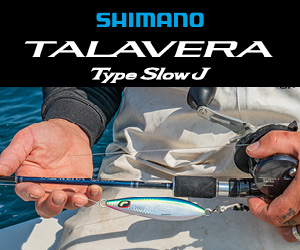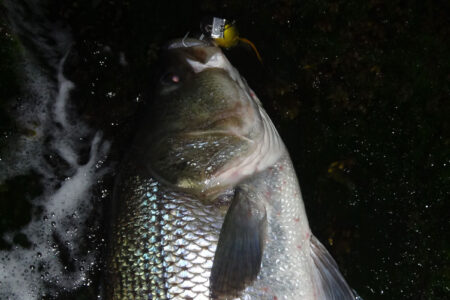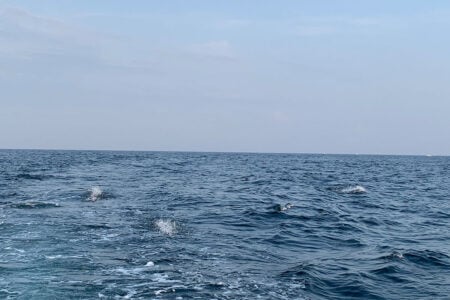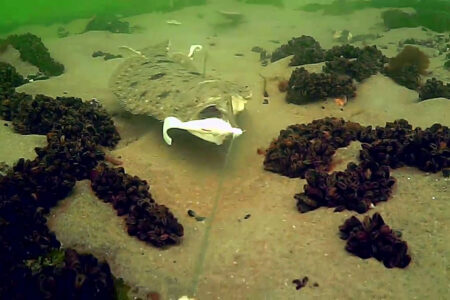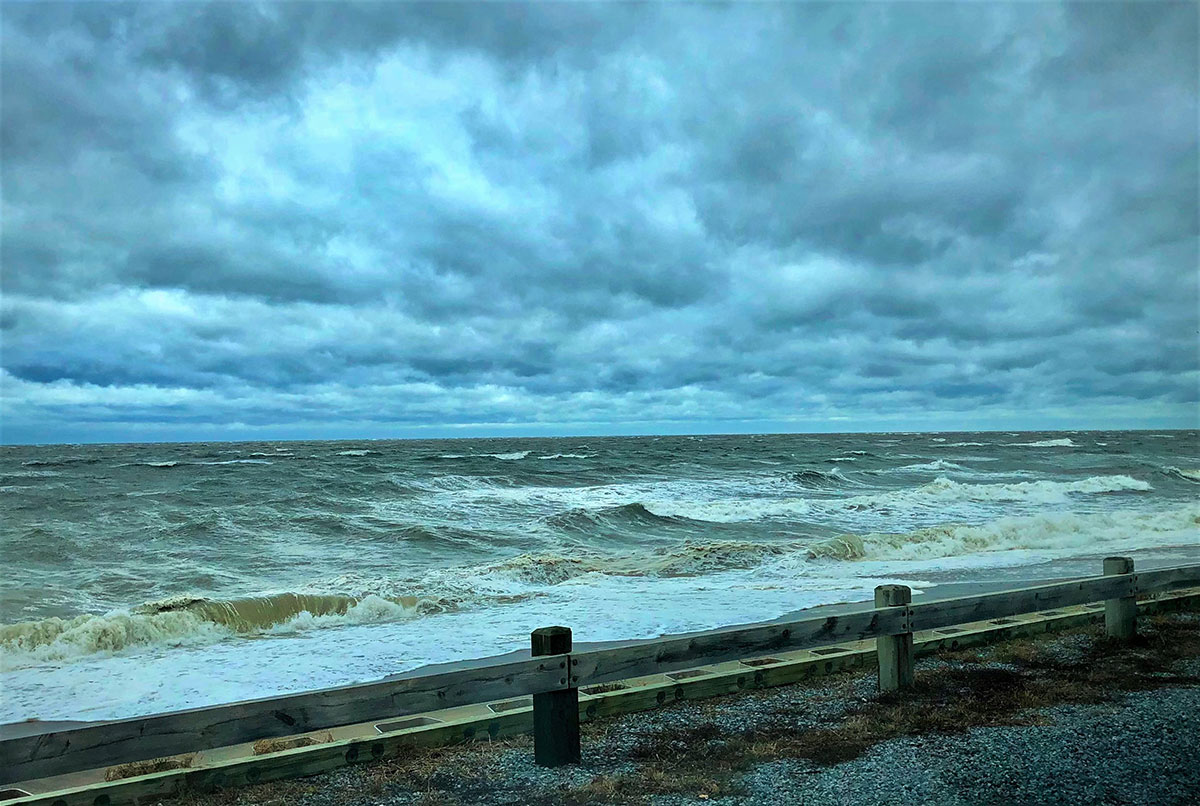
Secret spots may be rare these days, but every great spot has its secrets.
“When you get into a tight place and everything goes against you, till it seems as though you could not hang on a minute longer, never give up then, for that is just the place and time that the tide will turn.” -Harriet Beecher Stowe
There is an adage among coastal fishermen and baymen that if you do not like the weather just wait five minutes. That maxim seems true around any island that is influenced by the fickle nature of water-influenced weather patterns. But in those situations, one often needs only to wait until the next tide change to experience famine-to-feast fishing. In essence, four tidal movements each day affect the coastal waters and both tides and currents have profound effects upon the quality of any day’s fishing.
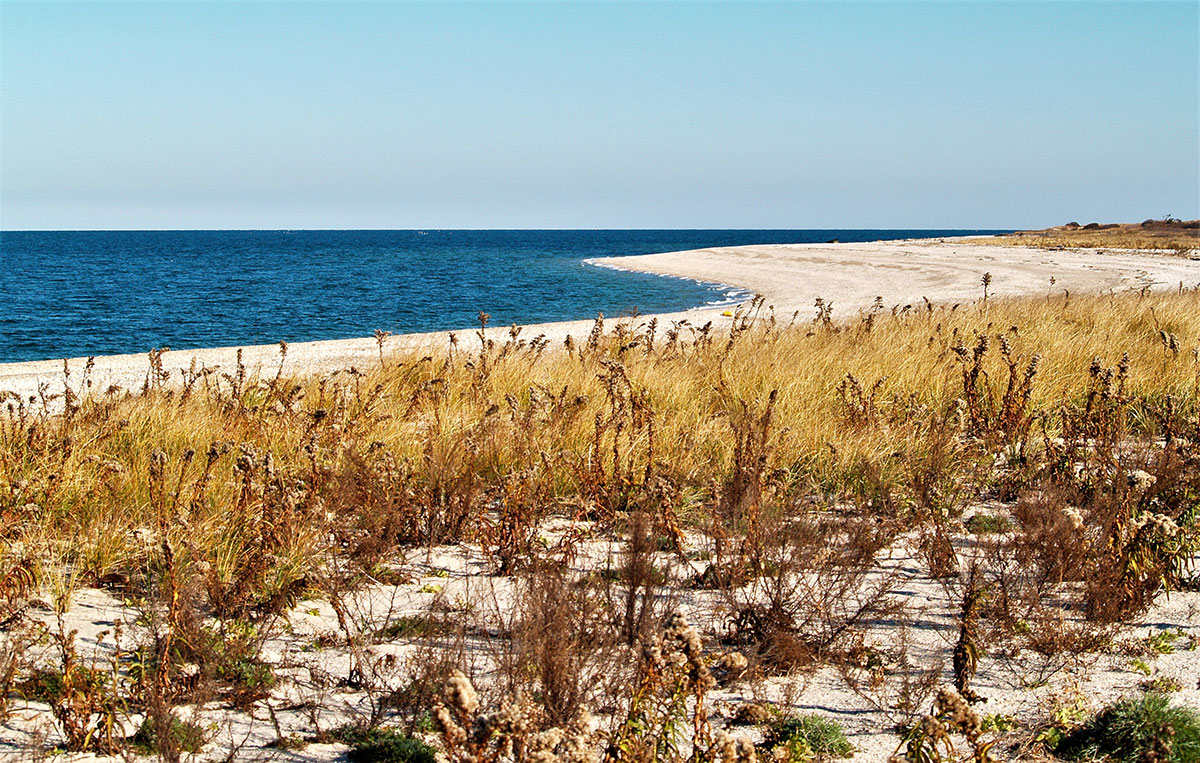
Understanding Tides
Tides are fundamentally generated by periodic bulging of earth’s water both toward and away from the moon. This hydrodynamic phenomenon pushes inward to create high tides while water pulled in the opposite direction causes outward movement and thusly, low tides. As a result of the earth’s rotation, two such cycles of high and low tides typically occur each day. The direct linear alignment of the earth, moon and sun during new and full moon phases creates the strongest tides and currents. These cycles are known as “spring tides”. At the other end of the spectrum are the much weaker “neap tides” that occur when the gravitational forces of the moon and sun are minimized by their perpendicular orientation to the earth. These tides arise during quarter moon cycles.
Understanding the interrelationship between tides and currents is one of the most important factors for achieving success as an angler, whether fishing from the surf or from a boat. Both tidal changes and resultant currents influence the movements and feeding behaviors of bait and predatory fish species. Fish will transition deeper into inter-tidal areas on the flood and follow bait with retreating water. For example, striped bass will often move on and off flats with flooding and ebbing tides. Fish will also feed deeper into marshes, grass lines, mangroves, harbors, and back country areas on high water, and again move out with falling water. Gamefish naturally gravitate toward areas of current where vulnerable prey can be ambushed. Flood tide occurs as the water level rises throughout the inter-tidal zone and to a point where maximum height and coastal penetration occurs. The magnitude of that ‘reach’ is influenced by specific coastline topography. The opposing ebb tide takes form as water levels recede and fall to the lowest point, known as low tide.
Tidal movement also produces currents. While tidal bulges move water vertically, currents move laterally or horizontally. Tidal currents are influenced by many factors, including: intensity of tides; wind direction and strength; contour of the coastline; surface and sub-surface structure like jetties, rock formations and underwater boulders; channels; troughs; and areas where water funnels and accelerates. Water temperature can also affect current flows.
This all translates to a scenario that, in the course of a single day, four such tidal changes can have an acute impact upon the quality and duration of fishing. In some situations, those changes can take place from one minute to the next, and the angler needs to be prepared to take advantage of those circumstances. To that end, I had a unique opportunity a few seasons back to spend a day on the water throughout all four cycles of tides at a local beach that I fish often. The lessons learned from that experience have paid handsome dividends ever since.
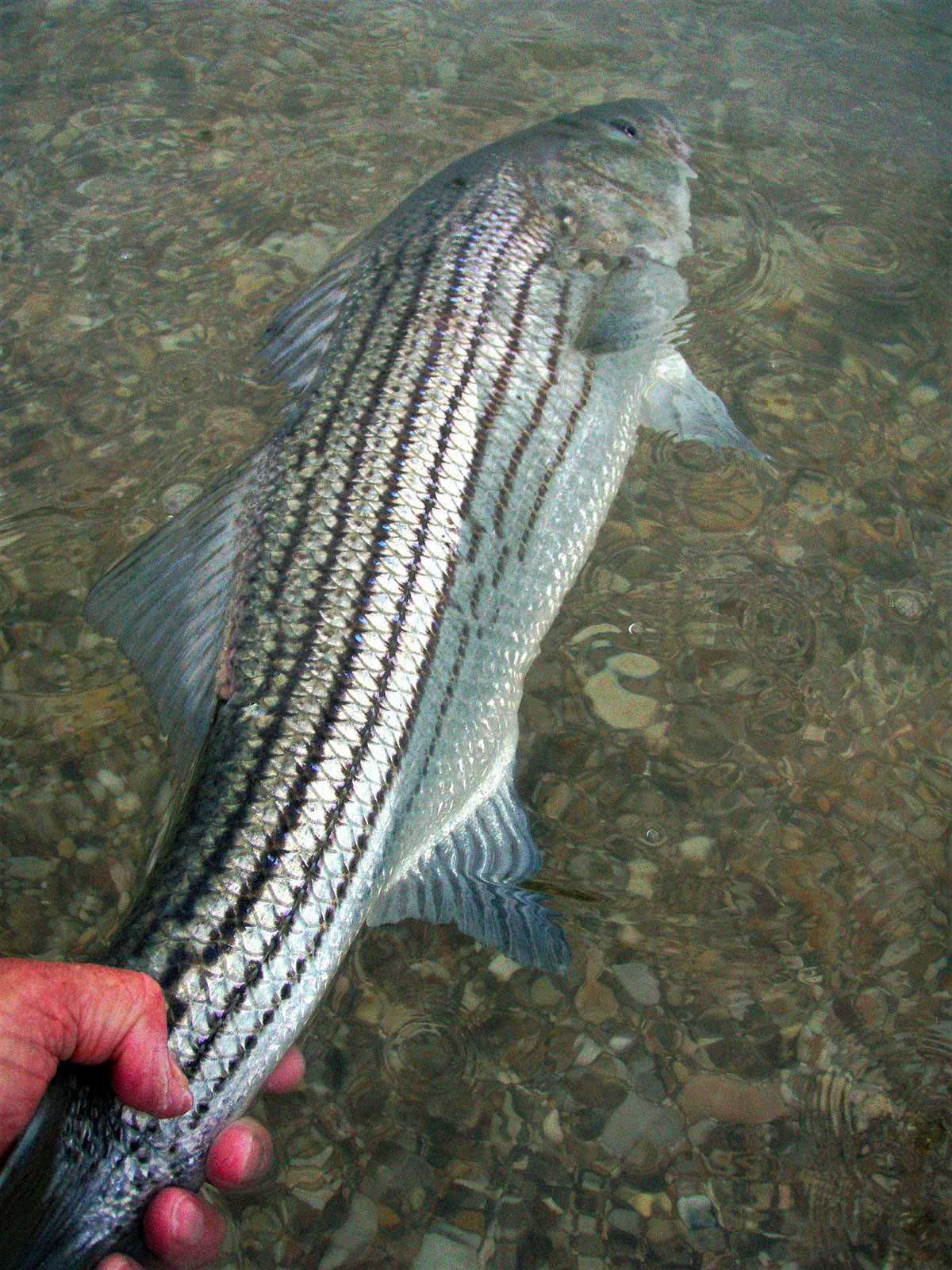
Window Shopping
That four-cycle day took place during the late spring, and was spent on the beach while fly fishing the surf. The outing began at a period that was two hours into the flood tide. I had mapped out a course that looped around a set of beaches and covered approximately three miles of shoreline. The trip down those beaches and back to my starting point enabled me to fish certain zones and areas during different periods of the tide cycles. While I had fished these areas many times in the past on specific tide – and while several the findings were expected – there were several revelations that were unexpected and that required further investigation.
One of the most conspicuous reaffirmations was that a particularly good piece of water will most often not hold fish during all tide phases. A few variables contribute to a location’s productivity. For example, the availability of bait, current, time of season, water temperature and the obvious presence of one’s targeted species are the critical factors affecting success. Taking current as a further example, one scenario unfolded highlighting that the intensity of current plays a key role in stimulating baitfish movement and the feeding activity of the predatory fish that track such movements. During this outing one such location only yielded fish during two specific current phases: when the current was at peak strength; and when that same current slowed to a point where reverse back eddies formed along portions of that same beach. What was equally revealing was that during both instances the window of opportunity for catching fish lasted no more than 45 minutes.
Productive fishing spots do not produce one hundred percent of the time. An angler who happens upon a spot like this during an off-period might easily conclude that this area is a dead zone, when in reality, it transforms into a hotspot once ideal conditions are reached. I have witnessed anglers who walk right by one of my most productive beach spots without as much as making a single cast. The true secret to fishing these tidal locations is to understand the interrelationship of the variables and how those factors work in concert to create an environment conducive to catching fish. With areas that are heavily fished, there are really no secret spots, just spots that have their secrets. The successful angler learns to connect the dots.
While many beach fishermen will take up fixed positions and wait out the tidal changes with the hope of having the fish find them, I fundamentally believe in a fishing strategy that has me on the move seeking out the fish. This is not simply a serendipitous walkabout on the beach but rather one that times my movements and fishing activity to be in concert with the peak activity at each of my anticipated stops. Although the former method is somewhat like sitting in a treestand when deer hunting, the latter tactic is more akin to still hunting, where the hunter slowly moves through the woods seeking out game. Both methods can be effective but success is dependent upon understanding when and why a particular location becomes active. Equally important is knowing when to sit still and when to be on the move. Not all hotspots are created the same, and each has its secrets to be sorted out. I am often painfully reminded of a day that I chose to sit at home watching a Yankees game rather than joining friend for a late afternoon surf fishing outing.
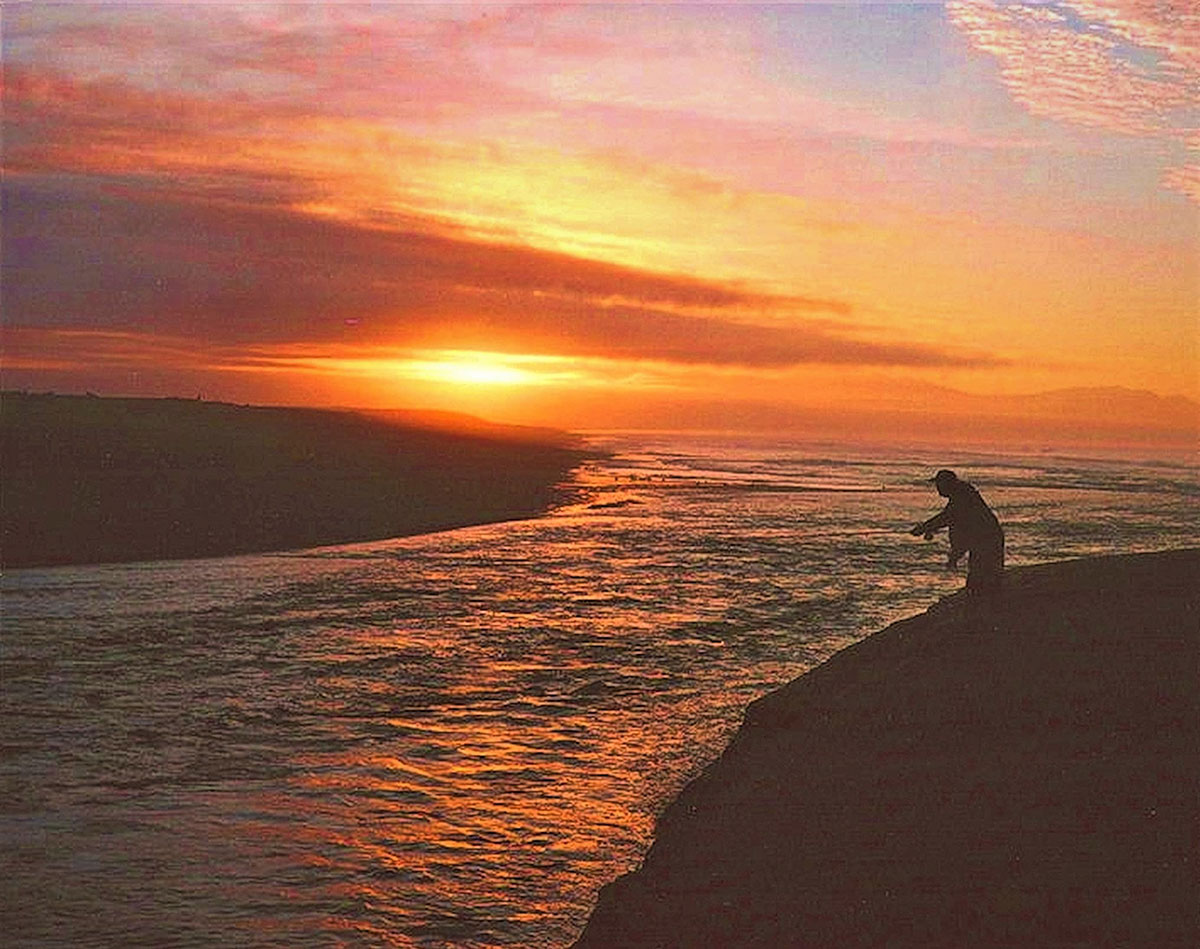
No Crying In Baseball
It was a hot summer Sunday and I figured the beach would be swarming with humanity and the boat traffic would be at heightened levels. Furthermore, when I checked the tide chart, I wasn’t totally happy with the stage of the tide that we would fish. Foolishly, I declined the offer to fish. So, I went about watching baseball, while my buddy went striped bass fishing. Long about the eighth inning, my phone rang. “Hey Ang’, meet me at the beach. And bring your camera? I got a good one.” My stomach sank just a bit upon hearing those words. My friend rarely, if ever kept a bass, so if there was something to photograph it had to be a very good fish. And indeed, it was, all 51 pounds of it. The bass happened to be largest bass my friend had ever caught from the beach, and this one was headed for the wall of his den. He would have released it, but as it turned out, the bass hit with such ferocity that the plug’s hooks raked the bass’s gills so it would have eventually expired. Keeping it was the ethical thing to do.
That aspect of the bass aside, this impressive catch was remarkable for when, where and how it was caught. While my prior assessment of that day’s tide potential was less than desirable, my friend had known that the area he wanted to fish would offer a productive pre-slack tide opportunity that would converge with one last remaining flow of structure-related current. There was a 45-minute window of opportunity during which one might capitalize on the movements and feeding behaviors of any bass that were in the neighborhood. My friend took advantage of that timing. As it turned out, the big bass hit at the very end of the slack tide, and among a series of exposed boulders where the slightest of current remained. It was a long cast, but as a former professional baseball pitcher, my friend could surely throw a plug a great distance. Success was his.
I dutifully, snapped a photo of the trophy fish and vowed that from that point on I would forego watching the Yankees when my friend called to go fishing. Yet, the real lesson to be learned from this event is that prior scouting and experience on that beach had established a base of knowledge about how fish responded during specific tidal phases. I would add that following the capture of that especially large striped bass, my friend and I fished that area regularly during similar tides with considerable success. The bass didn’t bite every time we fished, but when they did, the results were exceptional.
It is often said that the act of fishing is really a journey of discovery, and that even the worst of days can teach lessons that will pay handsome dividends in the future. It is the curious anglers who seek out answers to questions about bait and gamefish habitat, movements, and feeding behaviors and how the environment affects those variables. While you may not have to spend entire days on the water to undercover the mysteries to catching fish in your locale, plan to allocate some time exploring your waters with eyes wide open and your senses taking in the lessons that nature teaches. The benefits can be significant and perhaps change your outlook on an area and the way you fish.
